A lot can be learned from the Minoan figures found on peak sanctuaries. It is commonly concluded that the gestures of these figures match those of “worshippers, supplicants, and adorants” (Morris 2009, pg. 182). When looking at the gestures, the arms are a focal point as we will see in the following figures.
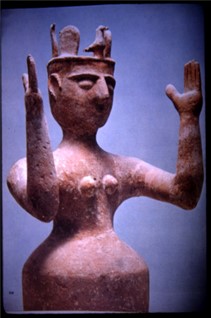
The raised arm figures were a prominent aspect in the collection of cult objects that were found on the sanctuaries of Crete (Prent 2009, pg. 231). The figure’s headpiece indicates that this object is meant to be a representation of a goddess, which would make the statue a dedication. Due to the context they were found in, the gesture of the raised arms is thought to express the appearance of the goddess (Prent 2009, pg. 232). The arms are disproportionately long in comparison to the torso and the rest of the body emphasizing the significance of the gesture. This figure in particular has its arms in front of its body rather than to the side, which is another way the gesture is found depicted in other raised arm figures. After the Late Minoan Period, these figures were not as notable or present, but they did happen to be reintroduced in a different context.
After the Minoan period, the raised arm figures began to appear in funerary contexts with a renewed interest in the figure and a willingness to experiment with the design. Patterns and shapes that were used on pottery during the protogeometric period are seen on the body of a raised arm figure inside a model of a temple. However, despite the changes, the figure maintains the same traditional gesture from before. The gesture in this new context still relates to the idea that it captures the epiphany of the goddess, yet the dedication is now for entrusting the dead to the goddess the figure represents (Prent 2009, pg. 235). Overall, the cult statue and the gesture are related to religious activities and practices based on the contexts they have been found in.

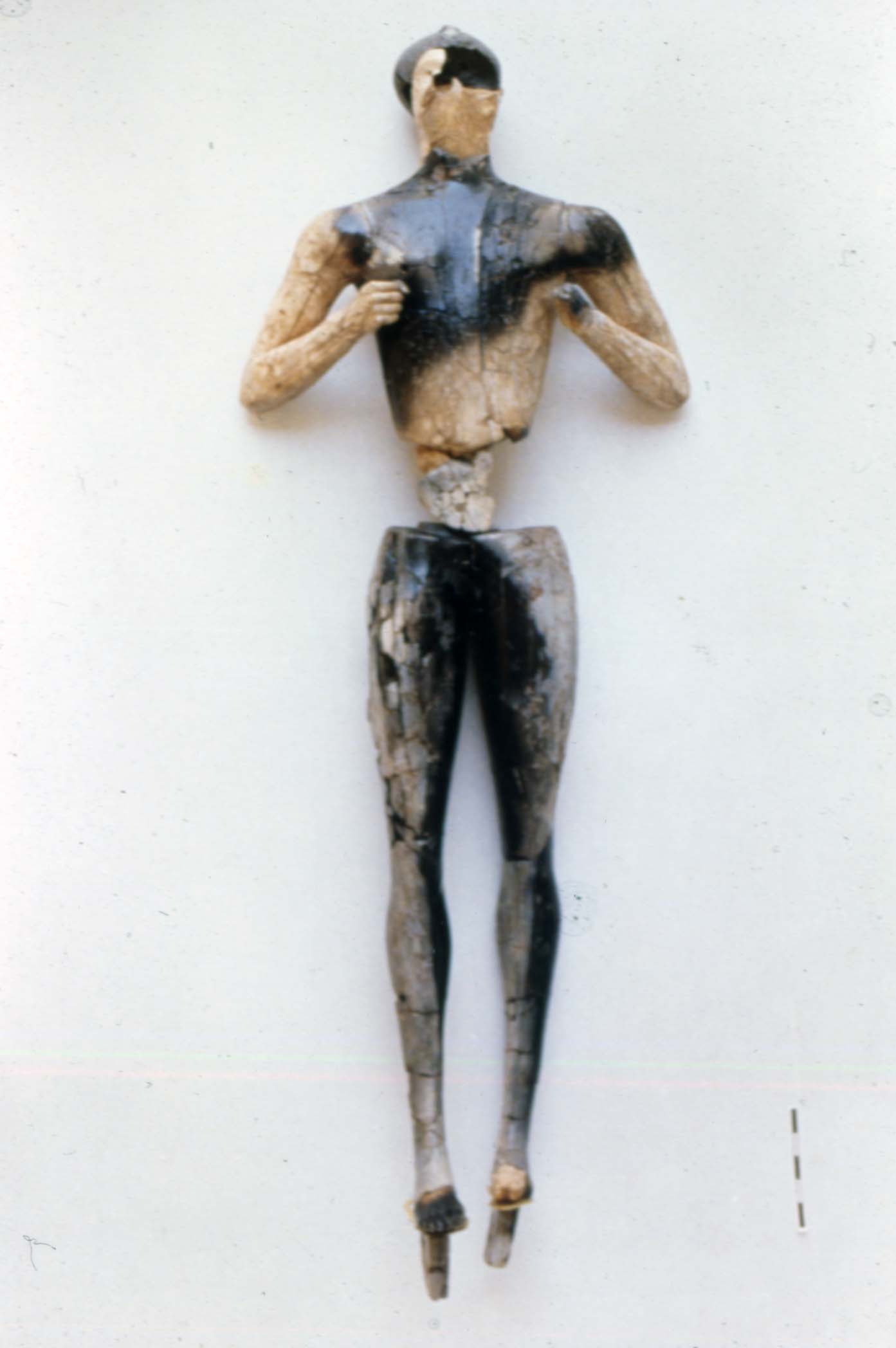
The Palaikastro kouros is a figure that was found at Palaikastro burnt and in pieces, but the pieces made of ivory bone, rock crystal, and serpentine were collected and assembled to recreate most of the body. A prominent interpretation of this figure is that it is of a male god. The figure is lean and has its arms upwards with its closed fists held up to its chest, as well as one foot slightly forward in front of its body. The gesture has been interpreted as one of adoration (Hemingway 2000, pg. 119). The meaning of this gesture would fit the association of the worship of the deity the figure represents.
The gesture is also one that can be seen in other kouroi figures made of terracotta that were found in a group on a peak sanctuary at Mt. Petsophas near Palaikastro. Similar to the Palaikastro kouros, the terracotta figure has its arms raised towards its chest. However, this figure has a belt and a dagger on its waist and is thought to represent a human votary rather than a deity (MacGillivray 2000, pg. 126). It is interesting that the votaries would have the same poses as a deity. As a votive offering, the gesture would match that of worshippers and adorants. It is also a very symmetrical pose, which has been a common characteristic of the gestures from figures found at peak sanctuaries or shrines.
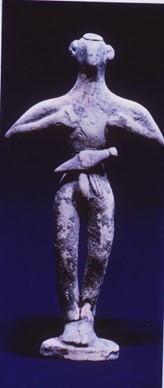
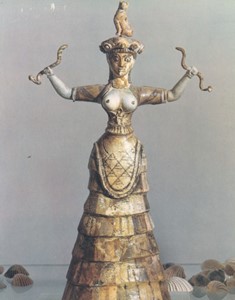
The snake goddess is referred to as such due to being found alongside votive offerings from treasures of a shrine that were being kept in the palace at Knossos (L.D.C. 1914, pg. 254). The faience statue is not only thought to be a goddess but also is also potentially a priestess for a goddess that is associated with snakes. The figure is holding snakes in both of her hands, possibly meant to indicate that she is a snake charmer or has an affinity for snakes. Her arms are raised upwards to the side and away from her body. The figure is standing tall and upright. The pose is proud and open with nothing to hide despite the exposed breasts, giving an indication or suggestion of power that would correlate with the belief that the figure is meant to be a goddess. The gesture of the arms is similar to that of the raised arm figures, which would also suggest that the identity of the figure is a goddess
Another snake goddess figure made out of chryselephantine which was also found at Knossos, has its arms held out in front of its body at a lower position towards its hips. The snakes are wrapped around the figure’s arms and their heads start to face upwards from where she holds part of their body in her hands. It could be a movement of offering or reaching out, which is typically seen in familiar modes of prayer. The gesture could be interpreted as part of a ritual to honor the faience snake goddess figurine that is represented as larger than the other figures it was found with. However, due to the quality of the figure and details, the chryselephantine figure could be one of the main figures that are part of this group of cult figures (Caskey 1915, pg. 249).
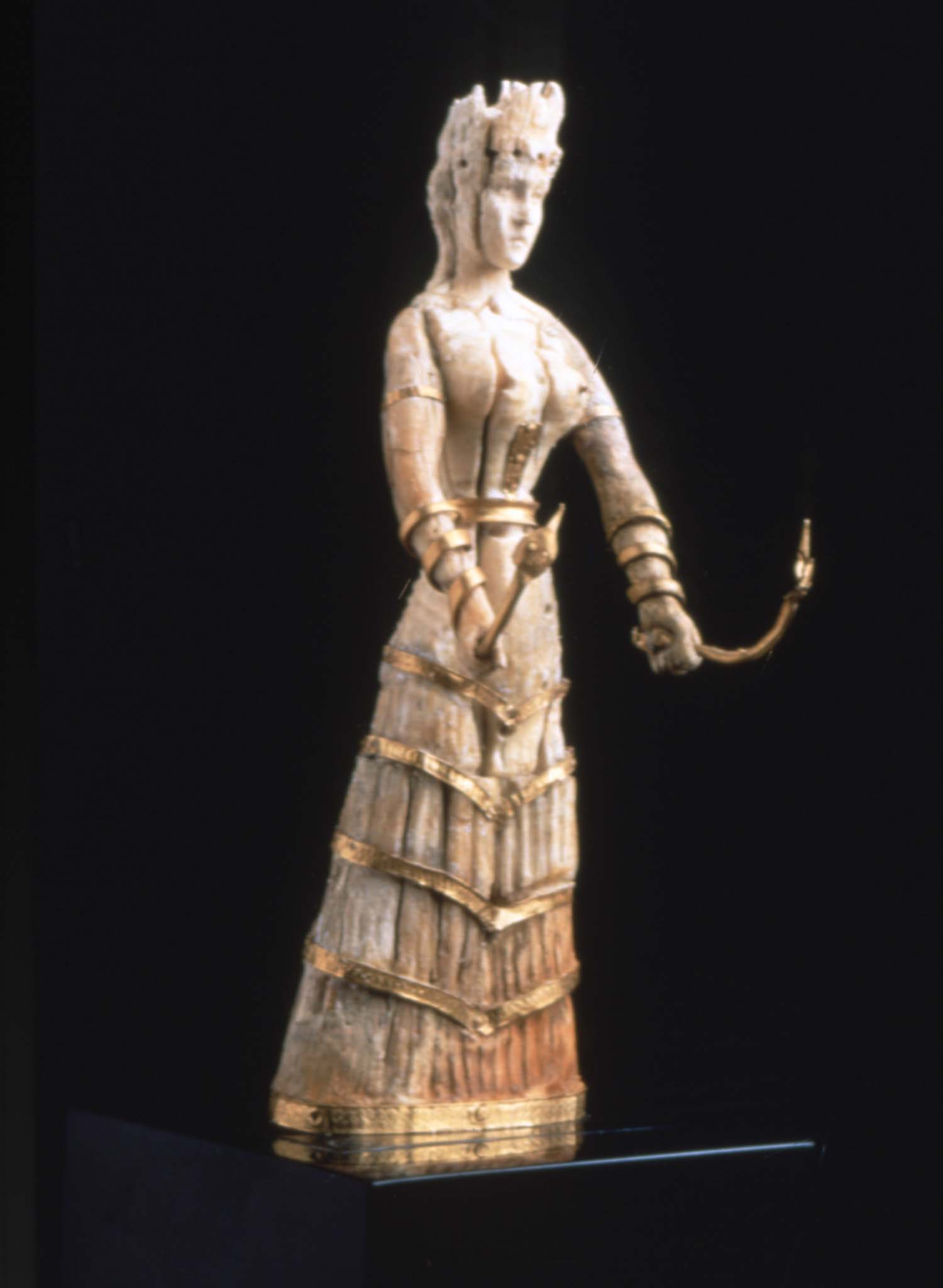
Elizabeth Peña '23